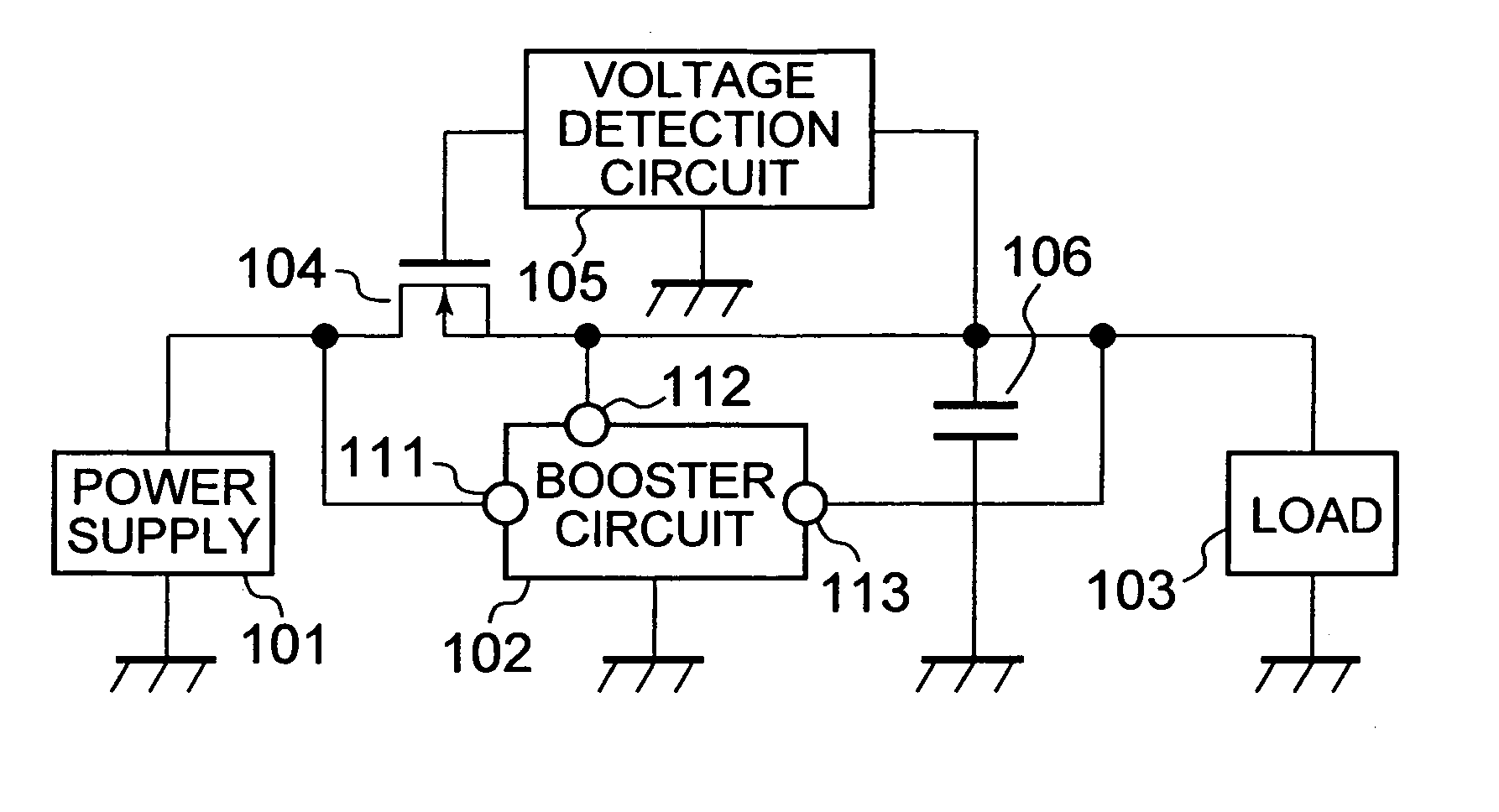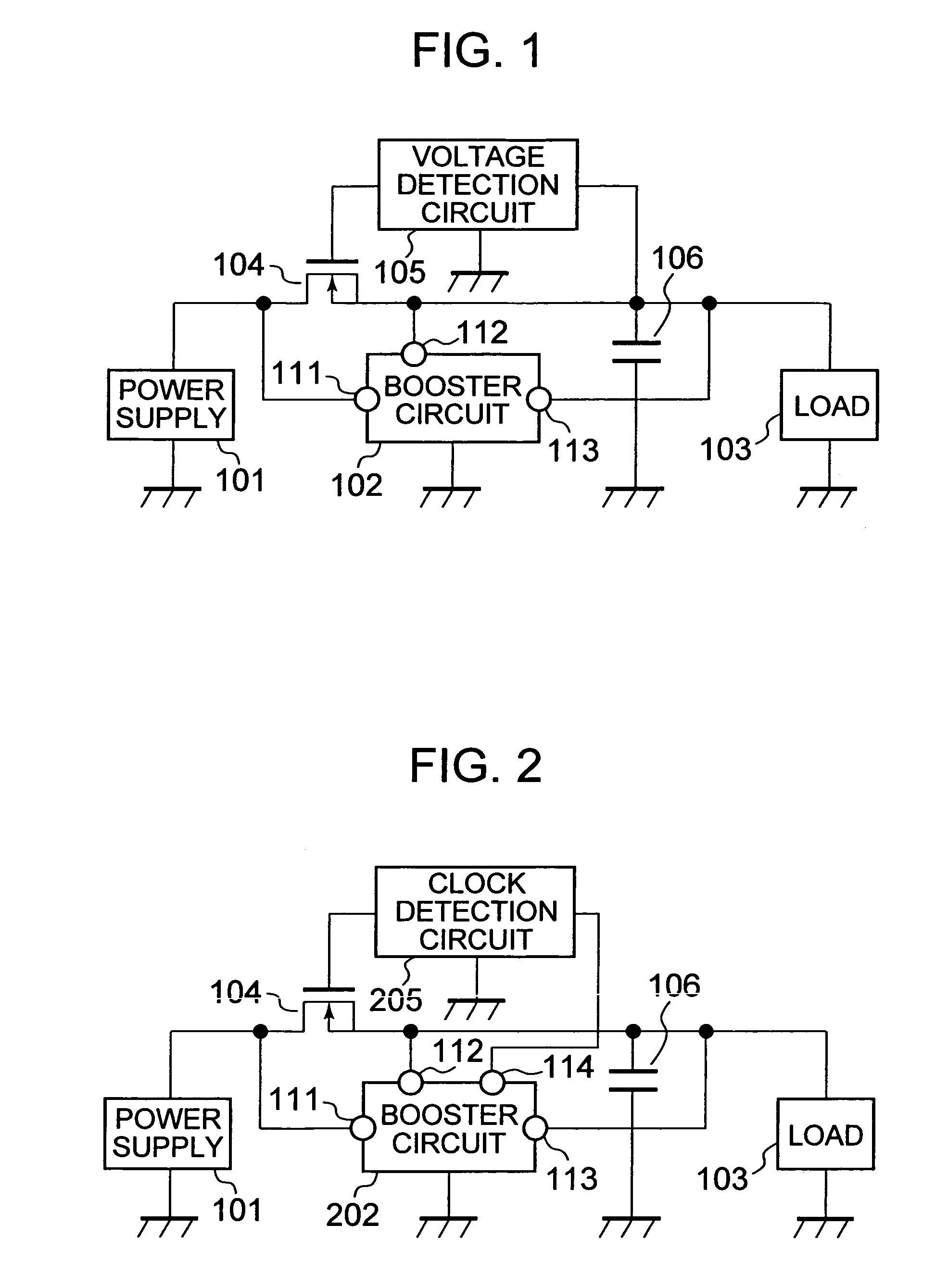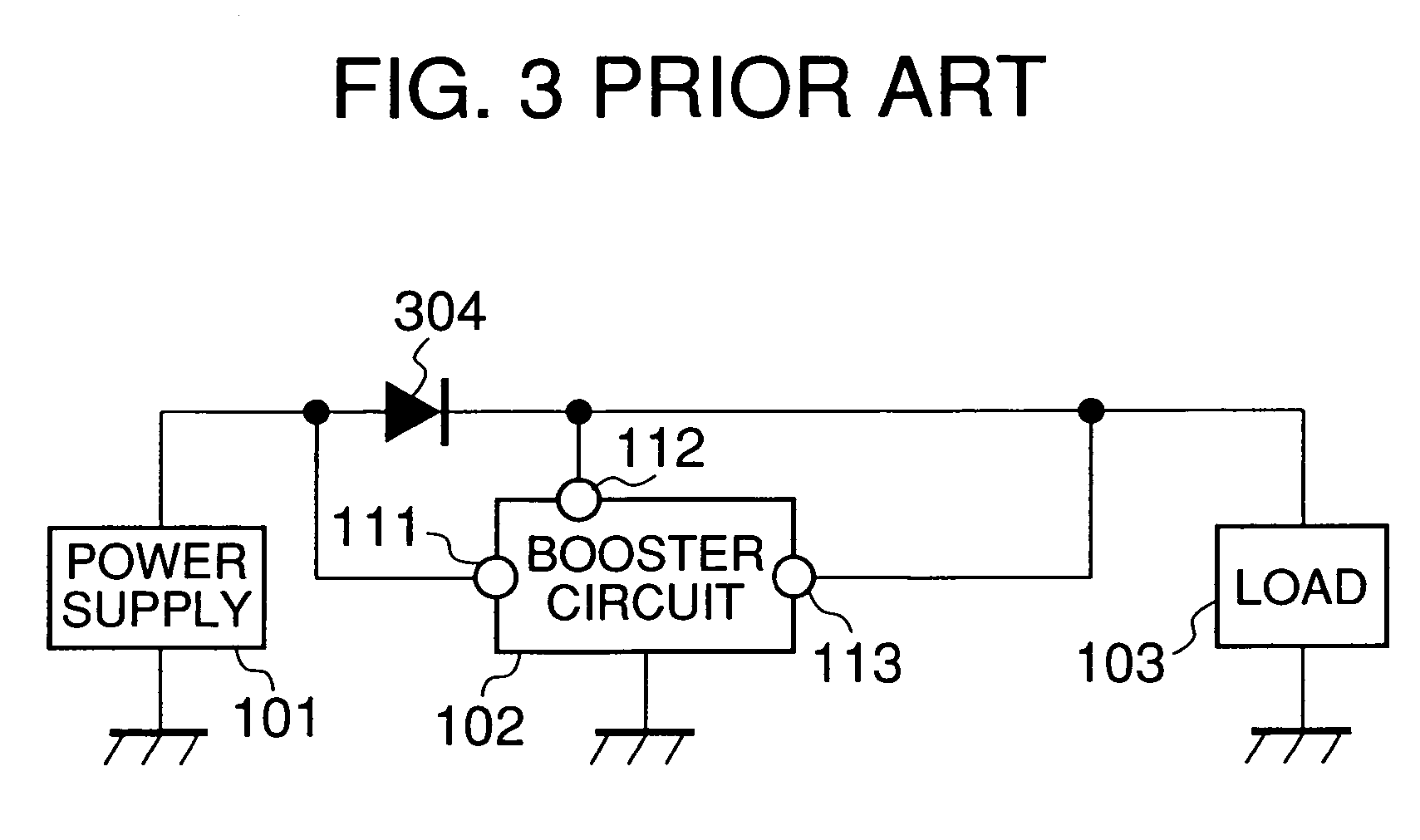Boost DC-DC converter and semiconductor device having boost DC-DC converter
a technology of dc-dc converter and converter, which is applied in the direction of dc-dc conversion, power conversion system, instruments, etc., can solve the problem that the conventional boost dc—dc converter cannot be actuated
- Summary
- Abstract
- Description
- Claims
- Application Information
AI Technical Summary
Benefits of technology
Problems solved by technology
Method used
Image
Examples
embodiment 1
[0023]FIG. 1 illustrates a semiconductor device having a boost DC—DC converter according to a first embodiment of the present invention.
[0024]As illustrated in FIG. 1, instead of the Schottky diode used in the conventional structure of a boost DC—DC converter, a p-channel MOS transistor (hereinafter briefly referred to as PMOS) 104 as a switching device is provided. Further, additionally provided to the conventional structure of a boost DC—DC converter are a voltage detection circuit 105 for detecting voltage at a power supply terminal 112 of a booster circuit 102 to control on / off of the PMOS 104 according to a result of the detection and a storage capacitor 106 for storing electric power such that the stored electric power can operate the booster circuit 102 for a predetermined length of time even when electric power is stopped being supplied to the power supply terminal 112 of the booster circuit 102. The PMOS 104 is connected in series between an input terminal 111 of the booste...
embodiment 2
[0030]FIG. 2 illustrates a semiconductor device having a boost DC—DC converter according to a second embodiment of the present invention.
[0031]As illustrated in FIG. 2, instead of the booster circuit 102 of the boost DC—DC converter and the voltage detection circuit 105 of the first embodiment illustrated in FIG. 1, a booster circuit 202 which is the booster circuit 102 having a clock output terminal 114 attached thereto for outputting a clock signal of an internal oscillation circuit of the booster circuit 102, and a clock detection circuit 205 for turning off the PMOS 104 when the frequency of a clock signal outputted from the clock output terminal 114 of the booster circuit 202 is equal to or higher than a first frequency that is slightly higher than the lowest frequency at which the booster circuit 202 can generate the boosted electric power and turning on the PMOS 104 when the frequency of the clock signal is lower than the lowest frequency at which the booster circuit 202 can ...
PUM
 Login to View More
Login to View More Abstract
Description
Claims
Application Information
 Login to View More
Login to View More - R&D
- Intellectual Property
- Life Sciences
- Materials
- Tech Scout
- Unparalleled Data Quality
- Higher Quality Content
- 60% Fewer Hallucinations
Browse by: Latest US Patents, China's latest patents, Technical Efficacy Thesaurus, Application Domain, Technology Topic, Popular Technical Reports.
© 2025 PatSnap. All rights reserved.Legal|Privacy policy|Modern Slavery Act Transparency Statement|Sitemap|About US| Contact US: help@patsnap.com



